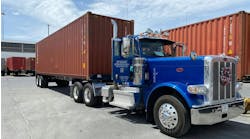There's no end to what we can do if Uncle Sam stays out of the way
President Clinton would like us to believe that he alone is responsible for our current state of economic prosperity. I beg to differ.
In fact, I think it was actually you and I - with, fortunately, minimal interference from the politicians - who got us where we are today.
During the recent period of economic growth, distribution managers did such an efficient job of managing the flow of goods that they were able to decrease inventory by about $130 billion. This occurred throughout the distribution pipeline, but primarily at the manufacturing level. As a result, more capital was available for investing in the kinds of systems and equipment that could improve efficiency even more.
These investments led to lower production costs, greater quantities (demand was up) and higher quality. In addition, rising demand meant higher employment levels.
While the production side of the economy was making significant progress in delivering less expensive, higher quality products to consumers, the market was flooded with myriad services from technology-driven entrepreneurs. This group offered services relating primarily to efficiency and quality-of-life issues.
Consumers were willing to spend so much money on services because they were more fully employed and found the use of these services cost-effective. Growth in the service industry was thus quite remarkable during this period.
The fact that economies in other parts of the world ranged from flat to declining also contributed to domestic growth in the U.S. Manufacturers here had a number of alternatives for cost-effective sources of supplies and labor, which helped keep costs down.
It's no surprise that consumers now spend more than 20% of their disposable income on imported goods; this number was less than 15% during the early 1980s. Having so many more choices of high-quality products means that we can buy more without significant increases in spending.
In addition, the U.S. was a safe and lucrative haven for investors from around the world. This situation helped maintain the liquidity (available funds) for investment at very attractive interest rates.
As incomes rose and tax receipts increased, federal, state, county and local governments were able to reduce their need for borrowed funds. This decrease in demand for money in turn contributed to modest interest rates. Reasonable rates made investment more affordable; they also made it easier for consumers to borrow money to support their more active buying patterns.
Finally, we come to the fact that partisan political behavior has stymied the enactment of many forward-thinking programs. Neither major political faction was willing to give the other the opportunity to crow about its achievements.
The executive branch had to weigh whether or not the legislative branch would pass its programs. The legislative branch had to deal with the finger-pointing schoolyard whiners we have so come to love in recent years. And opposing groups within this branch made it very difficult, if not impossible, to get legislation passed.
I once said that legislative gridlock is the best thing that can happen to an economy. It lets us decide what we want to do and how to do it without having to worry about significant changes in the law getting in our way. I still believe this.
I can only hope for eight more years of a beltway soap opera so we can continue to forge a successful economy.


